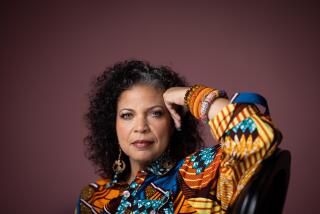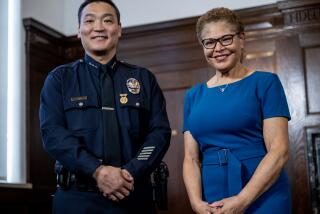Knee-jerk activists and their tantrum politics
Los Angeles has experienced a number of troubling policing “crises” over the last year and a half, all exploited to the hilt by activists and so-called community leaders. To say that these people “pimp” tragedy is not an overreach, or hyperbole. City officials must stop pretending that these activists are “the voice of the community.” They speak for no one.
On a regular basis, these activists brand the police as racists, brutes, killers and worse -- invariably before facts of any kind are established. The use of “tantrum politics” is extremely unhelpful as the city struggles to deal with crime, gangs and violence -- things that threaten the quality of life for us all. After all, it is people living in low-income, crime-ridden neighborhoods that need the police most, and eviscerating police efforts at every turn undermines that important but delicate relationship.
No better example exists of the activists’ knee-jerk approach than the nightmarish set of circumstances that recently took place in a South L.A. neighborhood: An armed man with a small child in his arms held a SWAT team at bay. When the confrontation dissolved into a shootout, Jose Raul Pena died and a SWAT team officer was wounded. Most tragically, Pena’s 19-month old daughter, Suzie Marie, was also killed -- by police bullets.
But clearly, it was Pena who had put his child in harm’s way. Even the Rev. Al Sharpton recognized that and called for calm and patience. But this simple “right and wrong” logic seems to have eluded L.A.’s usual police critics, who predictably declared the incident another example of “excessive force” by the LAPD.
Of course, we all know the history of racism, and America’s police had a part to play in it. Because less-than-ideal racial attitudes once dominated big-city departments, police became a focus of activists during the 1960s as radical politics swept across the country and germinated in colleges and universities. Police were ridiculed and taunted as “pigs” and worse, and the view -- or mythology, really -- of police as brutal racists lingers as a vital component of contemporary activist culture.
The definition of police as bigoted “occupiers” of urban neighborhoods also lives on as part of our popular culture -- another legacy of the ‘60s -- even though today’s law enforcement agencies are diverse and are in many places governed by liberal social policies. Use-of-force policies have been rethought and rewritten; “community relations” departments have been established; training has been revamped; racial and gender diversity have become paramount; and officers are trained to appreciate differences in language, culture and race.
Those big-city police departments that were once mostly white are now highly diversified: Many are led -- or have been led -- by minority chiefs. Before Chief William J. Bratton, the LAPD was headed by back-to-back black chiefs -- Willie Williams and Bernard C. Parks. More than 50% of today’s LAPD officers are minorities and women.
So why is the LAPD still described at every turn by activists as brutal and racist? These activists mobilized when Stanley Miller, a car theft suspect with a long rap sheet, was struck repeatedly with an officer’s flashlight. They staged protests when 13-year-old Devin Brown was shot and killed by an LAPD officer after the youth led police on a chase in a stolen car, and then, after crashing into a curb, promptly backed up toward officers. In Compton, sheriff’s deputies fired more than 120 shots at Winston Hayes, a murder suspect, at the conclusion of a slow-speed car chase. His wounds were minor, but activists called the confrontation the “OK Corral” and said the actions showed that deputies had no respect for the lives of black and brown residents of that neighborhood -- a constantly recurring theme among activists.
At many recent events staged by activists, placards have been seen denouncing “killa” cops, calling police “baby killers,” and branding the LAPD “racist.” The ANSWER coalition -- a collection of anti-war, anti-capitalist activists -- argues that the officers who shot Suzie Pena must stand trial for “murder.” They characterize the tragedy as an act “of racist brutality against the people of Los Angeles.” Is it any wonder that the LAPD has struggled to keep morale up among its officers? Did any of the activists bashing the LAPD know or acknowledge that in more than 38 years and 4,000 incidents involving the LAPD’s SWAT team, Suzie is the first hostage lost to police gunfire?
Well-reasoned, thoughtful criticisms of police strategies and tactics should be welcome at Parker Center and at the sheriff’s headquarters. But giving legitimacy to strident claims and inflammatory rhetorical arguments is counterproductive. Let’s share in the sorrow surrounding the tragic death of Suzie Pena, but let’s also support the men and women sworn to the duty of making our streets and neighborhoods safe.
More to Read
Sign up for Essential California
The most important California stories and recommendations in your inbox every morning.
You may occasionally receive promotional content from the Los Angeles Times.










